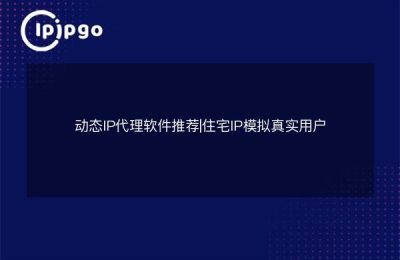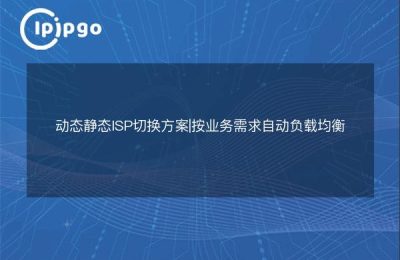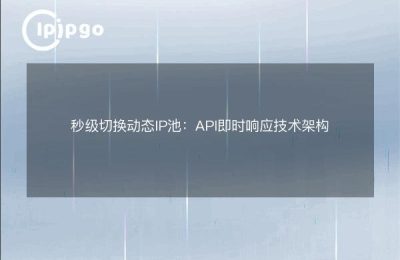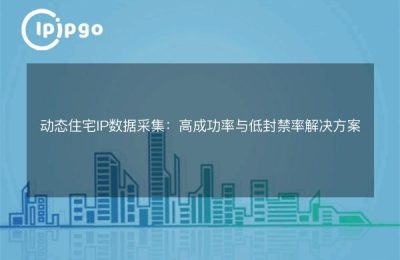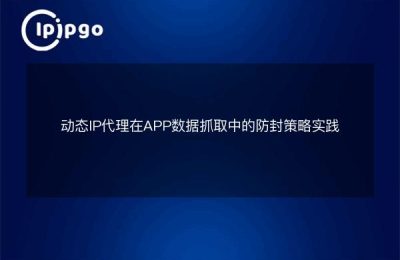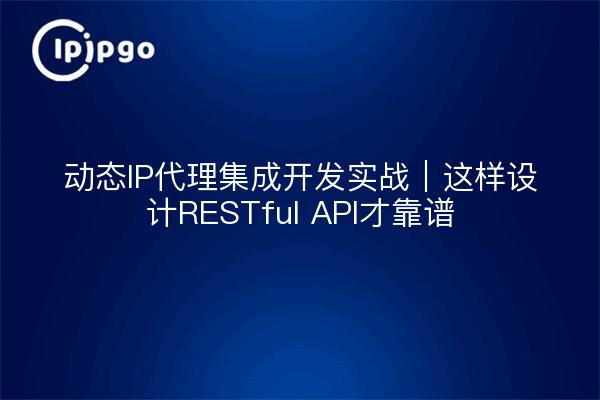
If you have done data collection, you know that IP blocking is a common occurrence. Last month, a customer used the traditional proxy program, 3 hours was blocked more than 200 IP. today we use ipipgo's 90 million + residential IP resources, hand in hand to teach you to build!Self-evolving agent scheduling systemThe
I. Three major pits of traditional agent integration
Let's look at a real case first: an e-commerce company used a common agent pool to collect data, resulting in the following problems:
| Problem scenarios | concrete expression | ipipgo solutions |
|---|---|---|
| Frequent IP failures | IP should be updated manually every 20 minutes | Dynamic IP automatic replacement mechanism |
| protocol incompatibility | SOCKS5 is not available on some websites | Full protocol auto-adaptation |
| regional restriction | Restriction of country-specific IPs on target websites | Global IP library for 240+ countries |
Second, the four elements of RESTful API design
Using ipipgo's API documentation as an example, a good proxy interface will fulfill these conditions:
1. Flexibility in authentication
Put it in the request headerX-API-Key, which is more secure than putting it in the URL parameter. It is recommended to automatically refresh the key every 6 hours, like this:
headers = { "X-API-Key": "ipipgo_your_key", "Content-Type": "application/json" }2. Smart request parameters
In addition to the usual IP type and region selection, it is recommended to addScene Marker Parameters. For example?scene=ecommerceThe system will automatically match the optimal IP strategy for e-commerce websites.
3. Response format with metadata
Don't just return the IP address, a good response should look like this:
{ "data": "203.0.113.1:8080", "expire_at": "2025-02-20T10:00:00", "next_renew":"/v1/proxy/renew" }4. Exception handling to be detailed
Don't just return 404 when you encounter an IP failure, refer to this error example:
{ "error_code": "IPIPGO_1003", "message": "Current IP triggered a windfall and has been automatically quarantined", "solutions": ["Try switching countries", "Reduce request frequency"] }Three, five steps to access ipipgo dynamic agent
The core code is demonstrated here in Python:
Step 1: Obtain a real-time proxy
response = requests.get('https://api.ipipgo.com/v1/proxy', headers=headers)
Step 2: Configure auto-renewal
While getting the IP, start a countdown thread to automatically request it 5 minutes before it expiresnext_renewInterface.
Step 3: Abnormal fusing mechanism
When 3 consecutive requests fail, the alternate API node is automatically switched:
if error_count > 3: switch_to_backup_endpoint()Step 4: Traffic Monitoring Kanban
Access ipipgo's monitoring webhook to get every IP in real time:
- Success rate of requests
- Average response speed
- Regional distribution statistics
Step 5: Intelligent Strategy Adjustment
Automatic weekly optimization of parameters based on monitoring data:
if morning_peak: set_request_interval(2.5) elif target_is_crawler: enable_smart_delay()IV. Solutions to high-frequency problems
Q: How to use dynamic IP and static IP together?
A: ipipgo's recommendedMixed packages::
- Dynamic residential IP for data acquisition (automatic change)
- Account login with static long-lived IP
- pass (a bill or inspection etc)ip_type=mixedAutomatic assignment of parameters
Q: How can I prevent my IP from being banned in bulk?
A: Include in the request headerBrowser Fingerprint Emulation::
headers["User-Agent"] = ipipgo.gen_random_ua() headers["Accept-Language"] = "en-US,en;q=0.9"Q: How do you test the effectiveness of new programs?
A: provided by ipipgoFree Trial PackageContains:
- 10 national residential IPs
- 500 API calls per hour
- Full protocol support testing
A cross-border e-commerce customer recently used this solution to achieve zero blocking for 3 million requests in a single day. Sign up now and get free!Intelligent Scheduling Configuration Templates, teaching you to avoid all the potholes we've stepped in.

